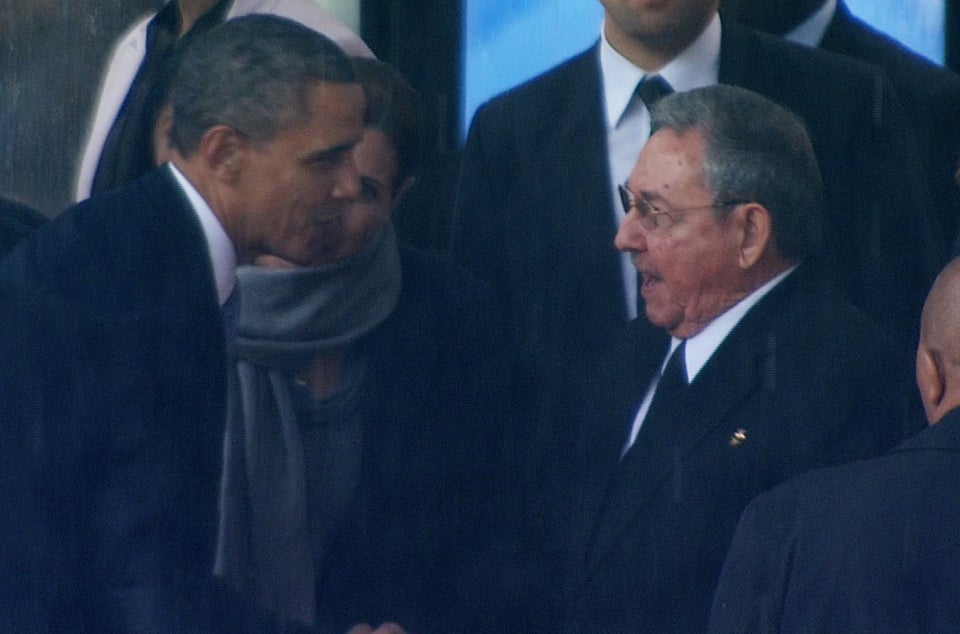WASHINGTON -- The Obama administration's proposal to keep 9,800 U.S. troops in Afghanistan next year was the product of lengthy deliberations.
The president faced pressure from his military brass to maintain a robust military presence in the country; from his liberal base, to expedite the withdrawal; from his diplomatic corps, to foster good relations with the next Afghan government; and from his own political advisers, eager to dispel the criticism of a scattershot foreign policy.
But for all the ingredients and deliberation that factored into the new Afghan policy, one major component remains vague: How much will it cost?
Administration officials don't have an official answer yet.
"We do not have a formal budget number to provide at this stage," said Caitlin Hayden, an administration spokeswoman, on Tuesday.
In various interviews, Tony Blinken, the deputy national security adviser, has estimated that the price tag for Afghanistan will be around $20 billion next year. Placed in the context of the cost of the war so far -- one recent study pegged the cost of the Iraq and Afghanistan wars at $4 trillion to $6 trillion -- this is a drop in the bucket.
But at a time when nearly every domestic program is subject to intense penny-pinching, a specific price tag could affect public opinion about the administration's plans to wind down America's presence in Afghanistan in the years ahead.
Blinken's figure of $20 billion is just an estimate. Last year's request by the Pentagon for the Overseas Contingency Operations, the main source of funds for Afghanistan operations, was $79 billion. The U.S. at the time had 32,000 troops in the country. But just because the number of troops will be roughly 70 percent smaller at this time next year doesn't mean the OCO budget will be proportionally less.
That assumption, said one administration official with knowledge of the discussions, "is not accurate," noting that OCO funds are used for many things beyond Afghanistan.
"Consistent with our previous OCO requests, this year's request will include costs incurred inside Afghanistan, certain expenses in the theater more broadly, and various related support costs," the official said. "For example, these costs include returning personnel and equipment from theater to their home stations, repairing and replacing equipment and munitions, and resetting our military forces as they return from war. In addition, OCO funding in FY 2015 will continue to support a significant portion of our military presence around the region, from which DOD supports Operation Enduring Freedom (OEF) in Afghanistan and other important missions."
Todd Harrison of the Center for Strategic and Budgetary Assessments has noted that the OCO has become something of a slush fund recently. Because it is not subject to the budget caps under sequestration, Congress has tried to use it to pay for expenses beyond those related to combat.
On Wednesday, the administration said that it would also propose that next year's OCO include $5 billion for a counterterrorism partnership project. Meanwhile, according to the Navy Times, "OCO money also is used to pay in part for U.S. missions in Africa, base support costs in Kuwait and Guantanamo Bay, Cuba, ship deployments around the globe, and increased end-strength expenses."
So while the administration official said the FY 2015 request "will be lower than the FY 2014 request" (they have kept $79 billion as a placeholder until a formal request is made), it was also stipulated that the final figure is "still being developed."
Harrison imagines that the final total OCO budget will end up in the $50 billion to $60 billion range. As to what portion of that will go to Afghanistan specifically, he doesn't think that Blinken's estimate is far off.
"The $20 billion is actually a pretty accurate estimate of what our costs of being in Afghanistan would be with 9,800 troops," he said, citing historical trends that suggest the cost per soldier is about $1.3 million.
At least one other expert agreed.
"I think it would be about right," said Larry Korb, a senior fellow at the Center for American Progress and former assistant secretary of defense, "but they play games with it. Last year, $30 billion of the $79 billion had nothing to do with the war. It went to normal things that you would pay for in the regular budget."

